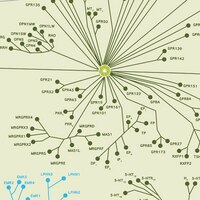Gonadotropin-releasing hormone receptors.
Millar, Robert P, et al.
Endocr. Rev., 25: 235-75 (2004)
2004
Zobrazit abstrakt
GnRH and its analogs are used extensively for the treatment of hormone-dependent diseases and assisted reproductive techniques. They also have potential as novel contraceptives in men and women. A thorough delineation of the molecular mechanisms involved in ligand binding, receptor activation, and intracellular signal transduction is kernel to understanding disease processes and the development of specific interventions. Twenty-three structural variants of GnRH have been identified in protochordates and vertebrates. In many vertebrates, three GnRHs and three cognate receptors have been identified with distinct distributions and functions. In man, the hypothalamic GnRH regulates gonadotropin secretion through the pituitary GnRH type I receptor via activation of G(q). In-depth studies have identified amino acid residues in both the ligand and receptor involved in binding, receptor activation, and translation into intracellular signal transduction. Although the predominant coupling of the type I GnRH receptor in the gonadotrope is through productive G(q) stimulation, signal transduction can occur via other G proteins and potentially by G protein-independent means. The eventual selection of intracellular signaling may be specifically directed by variations in ligand structure. A second form of GnRH, GnRH II, conserved in all higher vertebrates, including man, is present in extrahypothalamic brain and many reproductive tissues. Its cognate receptor has been cloned from various vertebrate species, including New and Old World primates. The human gene homolog of this receptor, however, has a frame-shift and stop codon, and it appears that GnRH II signaling occurs through the type I GnRH receptor. There has been considerable plasticity in the use of different GnRHs, receptors, and signaling pathways for diverse functions. Delineation of the structural elements in GnRH and the receptor, which facilitate differential signaling, will contribute to the development of novel interventive GnRH analogs. | 15082521
 |









